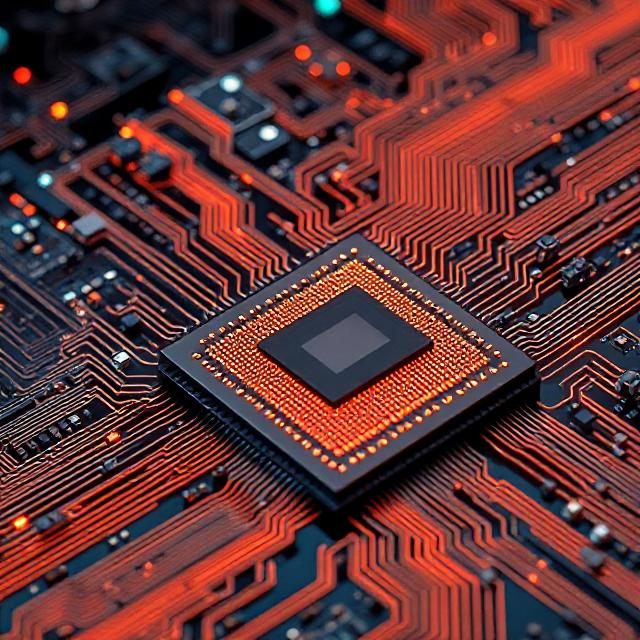1. What is VLSI?
VLSI (Very-Large-Scale Integration) is the process of placing millions of transistors on a single chip to create complex circuits like microprocessors, memory, or embedded systems. As devices get smaller and faster, power consumption becomes a major issue. Low-power VLSI design helps reduce energy use, heat, and battery drain—especially important in mobile phones, laptops, and IoT devices.

2. Why is Low Power Important?
-
Battery Life: Longer usage for portable devices.
-
Heat Management: Less heat means simpler cooling systems.
-
Reliability: Lower temperatures improve lifespan.
-
Environment: Less power = more energy-efficient devices.
3. Sources of Power Consumption
There are three main types of power consumption in VLSI circuits:
| Power Type | Description |
|---|---|
| Dynamic Power | Power used when transistors switch ON/OFF |
| Short-Circuit Power | Power lost during brief ON-OFF overlap |
| Static (Leakage) Power | Power used even when the circuit is idle |
4. Key Low-Power Design Techniques
A. Technology-Level Techniques
-
Use Low-Voltage Transistors: Lower voltage means less power.
-
Scaling: Use smaller transistors (advanced nodes like 5nm, 3nm).
-
High-k Metal Gate: Reduces leakage in transistors.
B. Circuit-Level Techniques
-
Power Gating: Turn off unused parts of the chip to save energy.
-
Clock Gating: Disable the clock signal to idle parts of the circuit.
-
Multi-Vdd: Use different voltage levels for different parts of the chip.
C. Architectural-Level Techniques
-
Sleep Modes: Let the system sleep when not in use.
-
Parallel Processing: Do more in less time, then shut down quickly.
-
Dynamic Voltage and Frequency Scaling (DVFS): Adjust voltage and frequency based on workload.
D. Software-Level Techniques
-
Compiler Optimization: Smart code can reduce unnecessary operations.
-
Power-Aware Scheduling: Schedule tasks in a way that uses less power.
5. Design Flow for Low Power
-
Specification – Set power goals early.
-
Design Entry – Use HDL (Verilog/VHDL) with low-power awareness.
-
Synthesis – Use power-optimized logic synthesis tools.
-
Implementation – Apply power gating, clock gating, DVFS, etc.
-
Verification & Testing – Simulate and measure power usage.
6. Tools Used
Popular tools used in low-power VLSI design:
-
Synopsys Design Compiler
-
Cadence Innovus
-
Mentor Graphics PowerPro
7. Real-Life Applications
| Device Type | Importance of Low Power |
|---|---|
| Smartphones | Saves battery, reduces heating |
| Laptops | Longer runtime, better cooling |
| IoT Devices | Low power = longer life on small batteries |
| Medical Implants | Critical for patient safety |
| Smartwatches | Power efficiency = longer wear time |
8. Summary
-
Low-power VLSI design is essential for modern, energy-efficient electronics.
-
It involves techniques at multiple levels: technology, circuit, architecture, and software.
-
These techniques reduce dynamic, static, and short-circuit power.
-
Used in many devices, especially where battery life and heat are concerns.
Tags: advanced CMOS technologies, architectural techniques, battery life, Cadence Innovus, chip design, chip design techniques., chip-level power reduction, clock gating, compiler optimization, device reliability, DVFS, dynamic power, dynamic voltage and frequency scaling, EDA tools for low power, Embedded Systems, energy optimization, energy-efficient electronics, HDL, heat management, high-k metal gate, IoT devices, laptops, leakage power, leakage reduction, long battery life, low power VLSI, low-power design flow, low-power techniques, low-voltage transistors, medical implants, memory chips, Mentor Graphics PowerPro, Microprocessors, mobile device efficiency, multi-Vdd, parallel processing, power consumption sources, power gating, power simulation, power-aware architecture, power-aware computing, power-aware scheduling, power-aware verification, Power-efficient circuits, power-efficient design, real-world applications., RTL design, short-circuit power, sleep modes, smartphones, smartwatches, static power, Synopsys Design Compiler, synthesis tools, technology scaling, transistor integration, Verilog, Very-Large-Scale Integration, VHDL, VLSI, VLSI design flow


